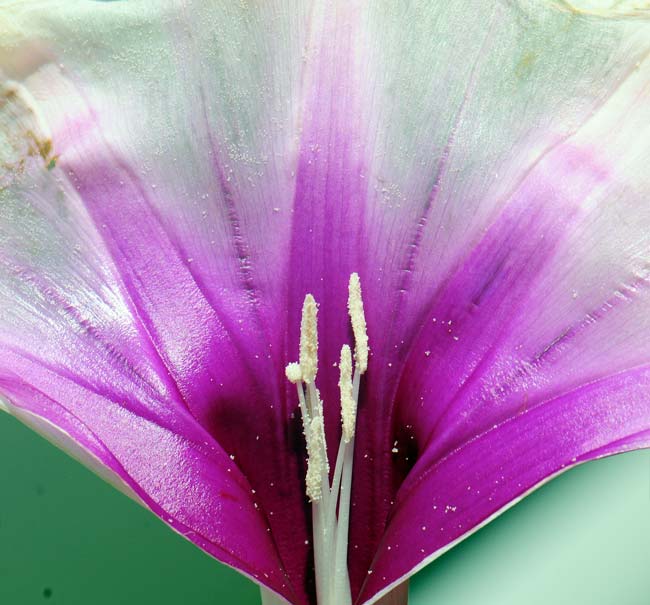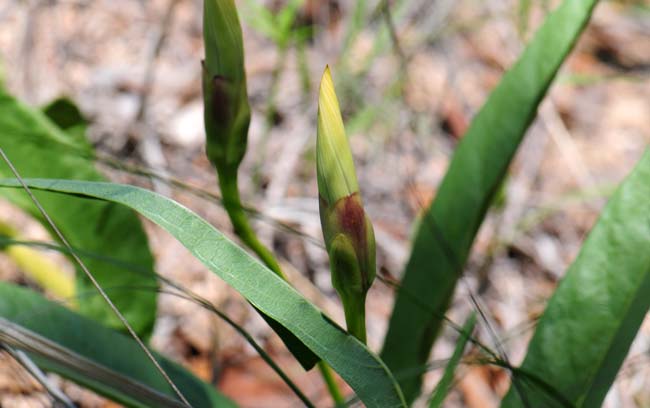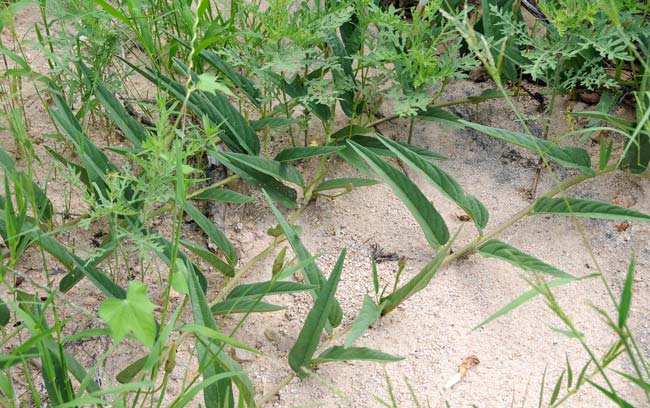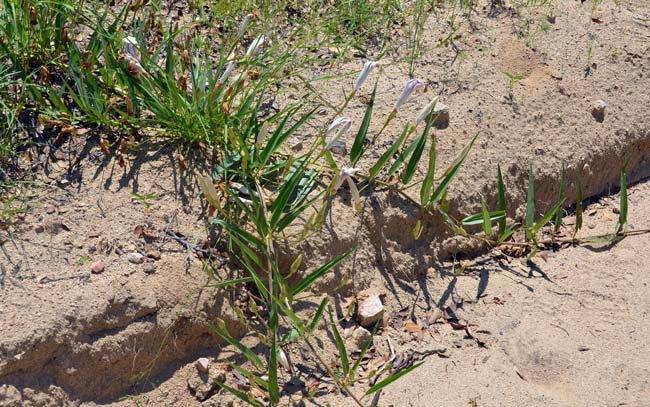Ipomoea longifolia, Pinkthroat Morning-glory




Scientific Name: Ipomoea longifolia
Common Name: Pinkthroat Morning-glory
Also Called: Longleaf Morning Glory, Pinkthroat Morningglory, Pink-throat Morningglory (Spanish: Estrella de la Mañana, Alcaparra, Mataliste, Cebolleta)
Family: Convolvulaceae, Morning Glory Family
Synonyms: ()
Status: Native
Duration: Perennial
Size: Low growing, prostrate, trailing.
Growth Form: Forb/herb; vine; spreading up to 6 feet or more.
Leaves: Green; elongate, entire.
Flower Color: White with deep pink throat, large showy flowers.
Flowering Season: July to August.
Elevation: 4,000 to 6,000 feet.
Habitat Preferences: Grassy areas, plains and mesas.
Recorded Range: Rare in the United States where Ipomoea longifolia is found in southern Arizona and New Mexico. Also occurs in Mexico. In Arizona Pinkthroat Morning-glory is found in southern and southeast parts of the state. In Texas it is found in the extreme southwest near the Rio Grande River.
North America & US County Distribution Map for Ipomoea longifolia.
U.S. Weed Information: No information available.
Invasive/Noxious Weed Information: Exceptions in Arizona are:
Ipomoea carnea, Mexican bush morning glory,
Ipomoea triloba, Three-lobed Morning Glory, and
Ipomoea arborescens, Morning Glory Tree the federal government and/or a State.
Plants included here are invasive or noxious. The genus Ipomoea is listed as a Noxious Weed by Arizona and Arkansas.
Wetland Indicator: No information available.
Threatened/Endangered Information: No information available.
Comments: There is not much information in the literature or online for this species.
As with many Morning-glories, Pinkthroat Morning-glory attracts bees, butterflies and birds.
Also see in Southwest Desert Flora; Canyon Morning-glory, Ipomoea barbatisepala, Purple Morning-glory, Ipomoea capillacea, Crestrib Morning-glory, Ipomoea costellata, Trans-Pecos morning-glory, Ipomoea cristulata, Ivyleaf Morning-glory, Ipomoea hederacea, and Tripleleaf Morning-glory, Ipomoea ternifolia.

